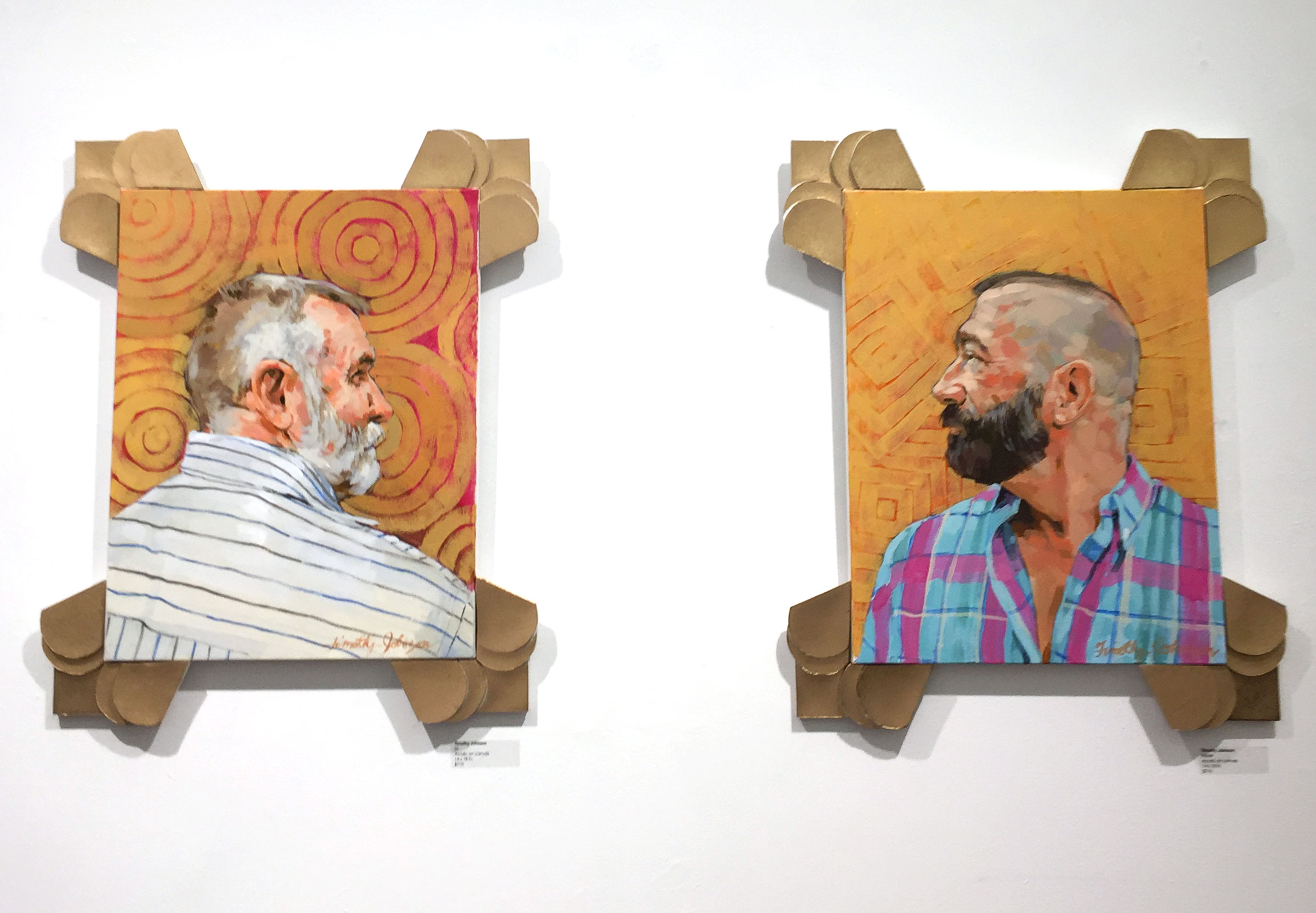At Touchstone Gallery in downtown D.C., three separate collections will be running until Oct. 1. The collections, “About Face: Reversals and Undoings,” “Physiognomy,” and “Ordered Complexities,” are all intricate explorations of the world around us, though they have little in common at the surface. For first timers at the Touchstone Gallery, the “About Face: Reversals and Undoings” collection is a delightful peek into the portfolios of several disparate artists, and they will no doubt leave the gallery absolutely smitten by the striking portraits of “Physiognomy” and the masterful transformation of the concrete into abstract found in “Ordered Complexities.”
The largest collection, “About Face: Reversals and Undoings,” was a collaboration amongst the various artists of the Touchstone community revolving around the concept of “reversal.” The pieces in this collection address reversals in all forms, including a portrayal of Barbie as Aphrodite and a frightening sculpture of a snarling face titled What the HELL Would You Know About Justice?. A personal favorite from the collection, Haphazard, features multicolored strips of paper tied around dowel rods to create a series of fringed banners. At first glance, it seems to be lacking imagination, but its secret is hidden in the true identity of the strips of paper. Each one was once part of an old, unwanted watercolor that artist Jeanne Garant repurposed and “reversed” for this project. Garant allowed the old works be reborn into a vibrant, new medium rather than fating them to the trash
For other works, the theme was less clearly defined but no less eye-catching. David Alfuth’s Taking Back 3D collage of breathtakingly delicate foliage and pillars evoked thoughts of fairytales and enchanted forests. His interpretation of “reversal” is perhaps in the contrast between the sharp architectural lines and the soft curling leaves, or maybe it is hidden in plain sight in the black and white scheme. Constellations #5 and Constellations #6 by Claudia Samper featured charming interactions between birds in different manifestations – songbirds, paper cranes, and constellations. The simple line work constellations are in the likeness of birds as well, but they float high above the songbird and crane, both bright splashes of yellows on an otherwise pristine canvas. The paper crane is given dimension by the slightest amount of shading, and the songbird is finely detailed in all his feathered glory. The reversal here is in the deconstruction of the fully fleshed out songbird to the less defined paper crane, and finally to the minimalistic constellations up above.
The second collection of the night was much more condensed, both in quantity and overall scope. Timothy Johnson’s “Physiognomy,” as the name might suggest, is a study on facial expressions told through a series of small scale portraits, each crowned with a metallic, geometric frame. Though straightforward and seemingly uncomplicated, Johnson perfectly captures the subtleties of the expressions of all of his subjects and left visitors aching to know more about the people captured on his canvases. In Summer Harvest, an older woman in a bra and an unbuttoned, sleeveless flannel holds a watermelon against her hip and her head up high, defiant and proud. The oddity of the photo is certainly a head turner, but with each bold brushstroke, Johnson painted dignity and sublimity right into the contours of her face. Another standout is a duo of portraits of two men, titled Mister and Sir, each in side profile. Their eyes are crinkled up in smiles as they gaze fondly at each other, and these companion pieces, despite being individual portraits, convey the warmth of an intimate human relationship.
Johnson’s portraits are endearing and affectionate, but their placement in the gallery did not do them justice. The portraits themselves, already small in size, are dwarfed further by the white expanse of the walls behind them. Had they been less spread out, their setting would have better reflected the intimacy captured in the paintings.
The final exhibit, “Ordered Complexities” by Patricia Williams, was equally captivating. In the blurb online, Williams introduces her pieces with a quote by L.L. Whyte: “Both art and science have to do with ordered complexity.” Williams drew inspiration from math equations and scientific principles, translating these rigid rules into free flowing artistic representation, like If You Don’t Do Anything, Nothing Changes, inspired by Newton’s First Law of Motion or the quirky Hey, Heisenberg, Have You Seen My Cat? in which she drew from both the Heisenberg Uncertainty Principle and Schrodinger’s Cat.
Williams’ work features a peculiar, almost childish style, featuring blocky shapes and letters in bold colors, but there is genius in the whimsy. Her conceptualization is mature and complex, shown in her written explanations in which she briefly explains the principle that inspired her work and why she chose the visual representation that she did. Reading each description is such a powerful supplement to truly appreciating how Williams decided to embody each concept.She even includes a suggestions box, asking visitors to leave equations or theories that might help inspire her next works. Her collection is a brilliant mashup of a youthful exuberance and the stoic intellectual.
“About Face: Reversals and Undoings” united several disparate pieces under the theme of “reversal,” while “Physiognomy” studied human faces and “Ordered Complexities” played with mathematical equations. It may seem like a bizarre blend of ideas, but each collection is so filled to the brim with character and charm that the three of them come together in perfect harmony, with no one outshining the others. From the casual critic to the art aficionado, Touchstone’s trio is sure to please.




